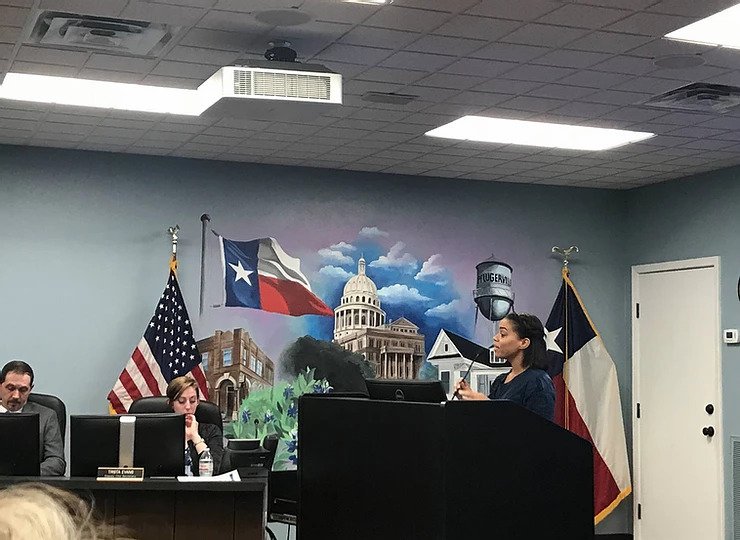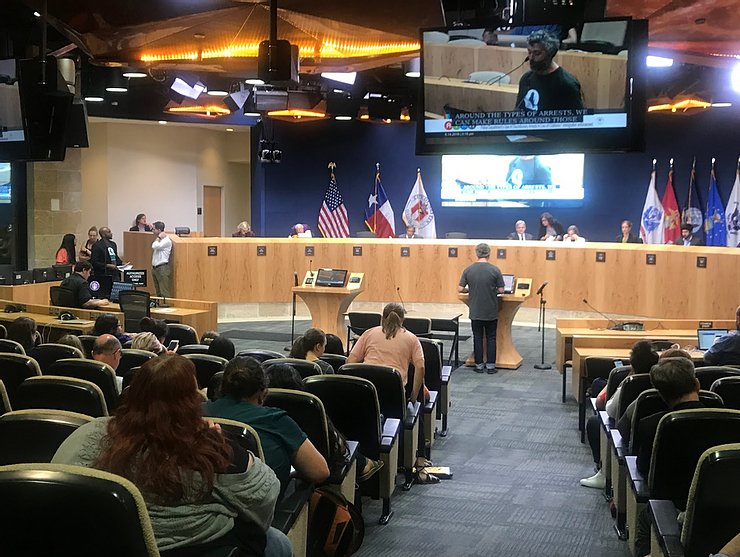Pflugerville Takes Next Steps In Establishing Equity Commission Law

‘Following a year’s worth of discussions, the city of Pflugerville has taken the next steps in formalizing the Pflugerville Equity Commission. A draft of the ordinance was presented at Pflugerville City Council’s June 9th meeting with council set to vote on formally establishing the commission June 23rd.’ (Community Impact Newspaper) This process was community-led through the work of a CARE TEAM that consisted of people from all backgrounds. #WeCARE MEASURE works to use data and education to mobilize communities to eliminate social disparities. Through our CARE Model process and other data tools we ensure lived-experience data of marginalized populations is leveraged by communities and institutions to design and measure equitable solutions to address social disparities in health, economics, education & criminal justice. Several people & organizations participated including: Black Pflugerville, Austin Area Urban League, Excellence and Advancement Foundation & more.
Understanding The Impact of CV-19 on People of Color in Austin, Tx

VIEW REPORT BELOW AUSTIN COVID-19 COMMUNITY FEEDBACK SURVEY FINAL REPORT -2
US Department of Health and Human Services Office of Minority Health

Overview (Demographics): In July 2017, 41.4 million people in the United States were black alone, which represents 12.7 percent of the total population. African Americans are the second largest minority population, following the Hispanic/Latino population. In 2017, most blacks lived in the South (58 percent of the black U.S. population), while 27 percent of the white population lived in the South. The ten states with the largest black population in 2017 were Texas, Georgia, Florida, New York, North Carolina, California, Illinois, Maryland, Virginia, Louisiana. Combined, these 10 states represent 58% of the total black population. Educational Attainment: In 2017, as compared to non-Hispanic whites 25 years and over, 86.0 percent of non-Hispanic blacks had earned at least a high school diploma, as compared to 92.9 percent of the non-Hispanic white population. 21.4 percent of non-Hispanic blacks had a bachelor’s degree or higher, as compared with 35.8 percent of non-Hispanic whites. More black women than black men had earned at least a bachelor’s degree (23.8 percent compared with 18.5 percent), while among non-Hispanic whites, a higher proportion of women than men had earned at least a bachelor’s degree (35.9 percent and 35.6 percent, respectively). 8.1 percent of non-Hispanic blacks have a graduate or advanced professional degree, as compared to 13.8 percent of the non-Hispanic white population. Economics: According to the Census Bureau in 2017, the average non-Hispanic black median household income was $40,165 in comparison to $65,845 for non-Hispanic white households. In 2017, the U.S. Census Bureau reported that 22.9 percent of non-Hispanic blacks in comparison to 9.6 percent of non-Hispanic whites were living at the poverty level. In 2017, the unemployment rate for blacks was twice that of non-Hispanic whites (9.5 percent and 4.2 percent, respectively). Insurance Coverage: In 2017, 55.5 percent of non-Hispanic blacks in comparison to 75.4 percent of non-Hispanic whites used private health insurance. Also in 2017, 43.9 percent of non-Hispanic blacks in comparison to 33.7 percent of non-Hispanic whites relied on Medicaid or public health insurance. Finally, 9.9 percent of non-Hispanic blacks in comparison to 5.9 percent of non-Hispanic whites were uninsured. Health: According to Census Bureau projections, the 2015 life expectancies at birth for blacks are 76.1 years, with 78.9 years for women, and 72.9 years for men. For non-Hispanic whites the projected life expectancies are 79.8 years, with 82.0 years for women, and 77.5 years for men. The death rate for African Americans is generally higher than whites for heart diseases, stroke, cancer, asthma, influenza and pneumonia, diabetes, HIV/AIDS, and homicide.
Be Your Child’s Best Advocate

Black students in the Pflugerville school district are 3.5 times more likely to be charged with assault than other students, according to a recent study. Black students in the Pflugerville school district are 3.5 times more likely to be charged with assault than other students, according to a recent study. Measure, an Austin-based research and public education nonprofit that uses data to address social disparities, found during the 2016-17 school year that 54 percent of assault charges at school campuses were related to black students. After learning of a seemingly disproportionate number of African-American youth being charged with assault in the Pflugerville School District (PFISD), MEASURE formed a partnership with PFISD, Black Pflugerville, and PFISD Police Department. Through our united efforts we discovered that Black children were charged with assault in 54% of the cases in the 2016-2017 school year, while only accounting for 16.8% of the student population. MEASURE brought these numbers to the attention of the district and Pflugerville community members.
Resolution 0508 – Recommendations to the Pflugerville City Council

MEASURE galvanized support to reject a potentially harmful proposal by members of Pflugerville City Council. The resolution called on council to approve “encouraging the courts to sentence criminals convicted of drugs or violent acts to the maximum punishment allowable by law”. After a nearly hour-long round of comments from the public and council members, Resolution 0508 was “tabled indefinitely”. See the full analysis. https://media3.giphy.com/media/26tkmwzpL7hyioxri/giphy.mp4?cid=e2a3cbdex0t02edzckk0r627ucu5352t57bsraupjpzbu5m4&rid=giphy.mp4
Dollars and Sense: An Evidenced Informed Analysis of Austin Crime and Policing Data

Community organizations across Austin united to dispute the renewal of the contract agreement between The City of Austin and the Austin Police Association. With the allocation of funds at the center of the dispute and the contact suspended until spring, MEASURE began it’s Dollars and Sense project to take a closer look at the practicality of the proposed budget. MEASURE researches conducted a comparative study between Austin and cities with similar population demographics. Download the report here.


